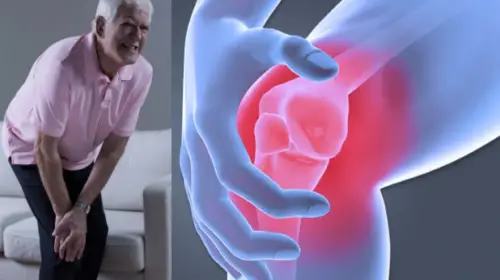5 Ways To Prevent Sharp Stabbing Pain in Knee Comes and Goes
The human knee is an amazing piece of architecture. This complex joint is designed to withstand forces four times greater than body weight at every step and to support you as you bend, turn or jump. But sometime, you may feel a sharp stabbing pain in knee comes and goes. In this post, I will tell you how to prevent this type of pain.
The knee joint consists of bone, ligament, and tendon wedging system work best when the surrounding muscles are strong and supple. Let them soften and even a long day of transporting heavy packages to the mall will cause pain.
And the weather is not always good either for the knees. Since aging, genetics, and injuries contribute to the wide variety of problems that can cause knee pain, it is not surprising that one in four over 55 complains of chronic knee pain.
Here’s how to avoid these reactions:
Contents
Eliminate Your Excess Weight
Every 450 grams (one pound) of excess weight you lose reduces pressure on the knees by 1.8 kilograms (four pounds). In addition, exercising while dieting makes it easier not only permanent weight loss but also translates into greater benefits for the knees.
One study followed 316 women and men with painful knees. Those who took a low-impact aerobic and bodybuilding class for one hour three times a week – and also lost weight – reported a 30% decrease in knee pain and a 24% improvement in their knee pain. ability to do everyday movements, such as climbing stairs and getting in and out of a car.
Do Not Smoke
The chemicals in tobacco smoke derail the process that heals torn ligaments, including those in the knees.
Researchers at the University of Washington Medical School have found that smoking reduces the number of cells that fight infection, called macrophages, that relate to their function at the site of ligament damage.
This is a problem because macrophages release chemical signals that summon other cells needed to perform repairs in the body.
Avoid High Impact Exercise
If running, step or jumps with gaps hurt, it’s time to move to a low-impact shaping routine.

Walking, swimming, cycling and water aerobics are great exercises that burn calories, stimulate cardiovascular fitness and have even been shown in studies to reduce knee pain.
Move Your Knee Muscles
Consolidate the muscles that support your knees to stay mobile, even if you have arthritis.
Strong quadriceps (big muscles down your thighs) and hamstrings (at the back of your thighs) act as shock absorbers that take some of the pressure off your knees when you walk, jump and bend .
They also keep the bones of your knees better aligned, reducing the risk of pain and excessive wear.
In one study, women with strong thigh muscles were 55% less likely to develop knee pain.
But do not stop there. Strengthening your core and back muscles, as well as your hips and buttocks, is just as important in reducing knee pain.
Support Your Knees
Wear shoes that respect your joints. The best shoes for your knees are flat and flexible.
Scientists analyzed the pressure on the knees of 1616 volunteers as they walked in clogs, sandals (gougounes), walking shoes and “stability” shoes (rigid shoes often worn by older people with balance problems).
Surprise winners: sandals and walking shoes, which allowed the feet to bend and flex naturally with each step, removing pressure from the knees.
If you have flat feet, sliding over-the-counter interior inserts or custom-made orthotics into your shoes can help keep the bones in your knees better aligned, helping to prevent pain.


